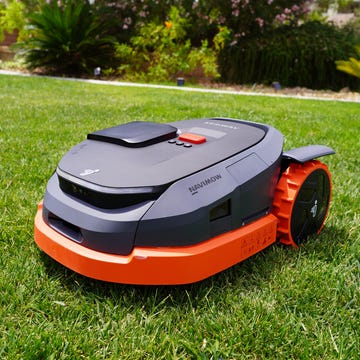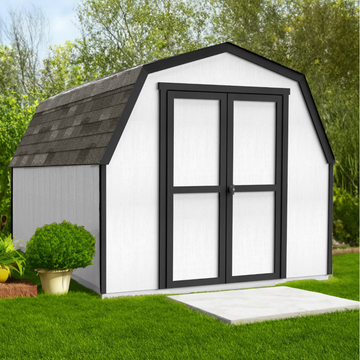1Beets
 istetiana//Getty Images
istetiana//Getty ImagesBeets, like most root vegetables, are cool-weather crops, so it's generally advised to plant them in milder to cold weather. However, planting them in June — before the peak of the summer heat — may be a good idea. After seeding, beets take 55-70 days to harvest, so you can start harvesting by late summer or early fall. Additionally, the soil is already warmed up by June, which promotes the germination of root vegetables and the sunny weather makes it a favorable time to plant this versatile vegetable.
Another amazing fact about beets is that they’re a two-for-one veggie. While they mature, you can cut off a few of their leaves (beet greens) and enjoy them in a delicious salad. Just make sure you leave a few leaves after cutting so the roots continue to grow.
2Carrots
 SimpleImages//Getty Images
SimpleImages//Getty ImagesIn June, carrot rust flies, a garden pest that mainly affects carrots, are less common. Infestation usually occurs during spring, so planting them in early summer can work in your favor. Like beets, carrots are root vegetables and need a good amount of sunlight (at least six hours every day).
Advertisement - Continue Reading Below
3Cucumbers
 Sorin Banica / 500px//Getty Images
Sorin Banica / 500px//Getty ImagesCucumbers, a low-calorie fruit, are 96% water. Their high water content makes them a refreshing veggie for hot weather. Plus, they're packed with nutrients like magnesium, potassium as well as vitamins C and K. Typically, cucumbers are vining plants, which require more support in comparison to shrubs (bushes). So, consider using trellises or stakes.
4Corn
 Yulia Naumenko//Getty Images
Yulia Naumenko//Getty ImagesCorn thrives in full sun and when planted in well-drained soil, making it a perfect addition to your garden this June. This grain is a great source of fiber and antioxidants.
Advertisement - Continue Reading Below
5Butternut Squash
 ediebloom//Getty Images
ediebloom//Getty ImagesLike most guards, butternut squash thrive in warm weather and full sun. They're prolific growers, so when planting, make sure you give them enough space to grow and spread.
6Bell Peppers
 Amit Basu Photography//Getty Images
Amit Basu Photography//Getty ImagesBell peppers are another vegetable that will germinate best when the soil is warm, so planting them this month is ideal. They shouldn't be grown in extremely high temperatures.
Advertisement - Continue Reading Below
7Zucchini
 fcafotodigital//Getty Images
fcafotodigital//Getty ImagesZucchini is a great addition to summer salads. All this summer squash needs to grow successfully is a warm, sunny location, moist soil and regular fertilization.
8Green Beans
 brytta//Getty Images
brytta//Getty ImagesGreen beans are relatively easy to grow with full sunlight and moderately rich soil. Green beans can be a delicious addition to summer salads and make wonderful side dishes. What's more, they're loaded with vitamin C, K and folate.
Advertisement - Continue Reading Below
9Tomatoes
 Joanne Liu//Getty Images
Joanne Liu//Getty ImagesTomatoes are warm-weather plants, making them one of the best crops for this month. Just make sure they're getting plenty of sunlight and are watered properly. Keep in mind that they need lots of fertilizer and should be pruned regularly in order to thrive.
RELATED: The 8 Biggest Tomato Growing Mistakes, According to Experts
10Melons
 alvarez//Getty Images
alvarez//Getty ImagesMelons (watermelons included) thrive in warm weather, and it’s generally recommended that they’re planted when the soil temperature is 65° or above. They also need at least seven hours of sun. Because of their high water content (90-92%), melons are a great choice for a summer diet.
Advertisement - Continue Reading Below
11Grapes
 Muhla1//Getty Images
Muhla1//Getty ImagesSuccessfully growing grapes involves having a large, open space. If growing vertically on trellis, grapes need 50 to 100 square feet per vine. If growing horizontally in rows, aim for eight feet between rows. Additionally, they need seven to eight hours of sunlight daily.
12Blueberries
 Hispanolistic//Getty Images
Hispanolistic//Getty ImagesBlueberries require lots of sunlight and acidic soil to grow well. To measure your soil’s acidity, you can use testing strips, a digital meter, analog probes or a test kit you’d have to send to a laboratory.
Advertisement - Continue Reading Below
13Strawberries
 Westend61//Getty Images
Westend61//Getty ImagesStrawberries can grow in temperatures between 50°F and 80°F. Most strawberries will not set fruit in temperatures over 80°F. Planting them this month, before the height of the summer heat, can work in your favor.
14Blackberries
 Diana Miller//Getty Images
Diana Miller//Getty ImagesBlackberries are high in vitamin C. Their peak harvest often falls in July and August. While it's recommended to plant bare root blackberry plants in early spring, container-grown blackberry plants can be planted between early spring and late summer.
Advertisement - Continue Reading Below
15Raspberries
 alvarez//Getty Images
alvarez//Getty ImagesRaspberries are another delicious berry to grow this summer. Not only are they a source of fiber — they also contain vitamin C and are high in antioxidants. When planting, choose a sunny location and consider using support, like a trellis, to keep the fruit off the ground.

Rosamelia is an Editorial Intern at Good Housekeeping. She's also a graduate student in NYU's Magazine and Digital Storytelling program. In her free time, you can find her reading and reviewing books on her bookstagram: amelias_biblioteca.
Advertisement - Continue Reading Below
Advertisement - Continue Reading Below
Advertisement - Continue Reading Below





























